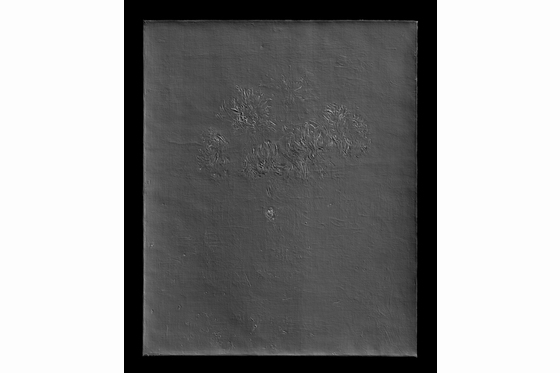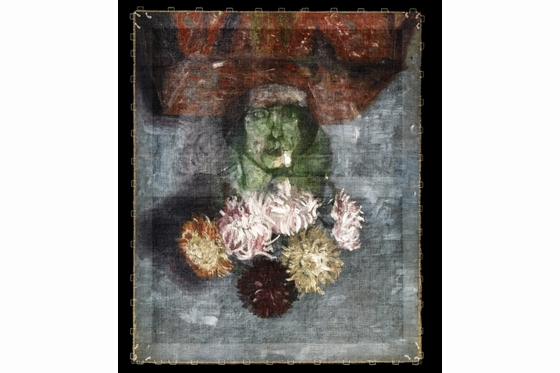
Lucida 3D Scanner recording the surface of the painting
The surface of a work of art can give us a deep understanding of its history. The use of digital technology to 3D scan in high resolution the relief of a painting is still a rare type of recording that can be essential for forensic analysis, especially if this data is combined with other layers of information such as color, infrared, X-ray, etc.

Factum Arte’s Belén Jiménez has been in charge of recording and processing the 3D data
Examinations of the painting are not contradictory to its attribution to a Dutch artist, dating in the last quarter of the 19th century. The different analyses previously carried out on the painting (X-ray and infrared) revealed very interesting layered sequence of images: the top image of the painting hides the upside down images of two portraits that are visible respectively in the infra-red and the X-ray data.
This short film, made with images by René Gerritsen along with the 3D data recorded by Factum Arte, describes the different imaging analyses (as well as scientific investigation of painting materials and technique) carried out on the painting:
Registering the relief data obtained with the Lucida 3D Scanner with the other layers provided by the owner of the painting, we have created a multilayer browser that allows to navigate the various levels of information with multiple combinations (high resolution viewer)
This research project in which the Factum Foundation collaborated is a good example of the role that new technologies, particularly digital high resolution 3D scanning, can play in the preservation, study and dissemination of paintings and works of art in general.









